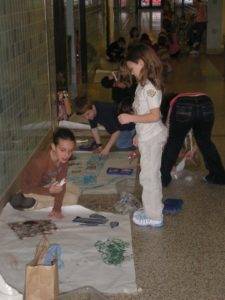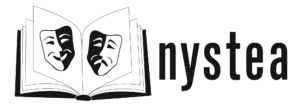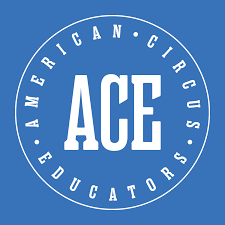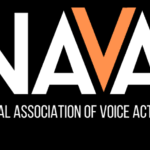For many years, the Canada Centre for Faith and Social Justice held monthly open meetings, and at each meeting, they would go through four phases in order to bring the social forces and ‘pre-scribed’ relationships into greater transparency. The four phases are:
Identifying Ourselves and Our Interests
Naming Issues
Assessing Forces
Planning For Action

Why is that important?
Many of us in Arts and Arts-in-Ed do work based in an idea of social awareness and justice, of remembering that ART is the great equalizer and singular opportunity to newly understand and re-imagine what is and what could be.
Below is a deeper explanation of those phases, followed by a project designed with those phases in mind to have as a brief context. I think even this short introduction (or reminder) of these ideas framed in this way can help us as we do everything from create new work to plan for a class.
The four phases for identifying social forces
The first phase, Identifying Ourselves and Our Interests, involves acknowledging the identity, assumptions, knowledge, strengths, and limitations of a group. For example, in one group we could find both wealthy and poor people, non-farmers who assume farmers have it easy, and people who have grown up on farms.
The second phase, Naming Issues, uncovers the major concerns of the group. We explore contradictory interests, personal histories, a structural analysis of society, and the short- and long-term goals regarding the issue. For example, some participants in a group want the local river cleaned up while others are more concerned with keeping taxes low.
The third phase, Assessing Forces, goes deeper, analyzing who in the society supports or opposes the goals of the group. We determine who might be supportive in the short term but is likely to withdraw support eventually, as well as the ground that has been gained and lost by all parties involved.
In the last phase, Planning For Action, we take an overview of shifting forces and people and ask where possibilities lie. Who can do what, when? How can the group build on its strengths and address its limitations? Throughout these phases, exercises such as drawing, sculpting, and collage work can be used, ending upon the skills of the facilitator and the needs of the group.
Deborah Barndt, a driving force behind NTM in Canada, stresses that it’s a spiral process: we move through the four phases to plan for action, we act, then we reflect on that action and what we’ve learned from it. Ultimately, the reflection and action are inseparable, become one.
I was working as the Director of the Performance Department with the Mental Health Association of the Southern Tier when I received a phone call from the Coordinator for a Youth Advocacy Program who was also heavily involved with the movements to restore historic Montrose (a small rural town in upstate NY) and develop and nurture it as a community.
He explained that the Youth Advocacy Program dealt largely with emotionally disturbed children from ages 3 to 18, and that he wanted to provide them, as a group with the opportunity to do something fun and satisfying. At first I was envisioning a series of creative workshops in which they could develop, some performance art bits, but he told me that the student and program needs were such that the staff worked one-on-one with the students, and that the students only came together once a month or so. He wanted a presentation or show that would engage all of them (despite the variance in age and emotional makeup), be attractive and interesting to the community at large, be in some way pertinent to the lives of the youth in the program but also make them feel good about who they were while breaking down barriers in attitude and understanding between these youth and the larger community.
He also felt very strongly about the community of Montrose. We talked at length about the relationship between the well-being and balance of the individual and that of the community, and the act of performance as a powerful means of rebalancing dark and light, on a individual and community level, with regard to spiritual, emotional, social etc sensibilities.
I suggested a stage adaptation of what I sometimes call the ancient teaching stories for the stage. These are tales and legends that the storytelling healers called into being with groups in their communities to bring learning, change, and understanding.
He liked that idea, and I began to hunt for the right story while he checked with his organizations to ascertain if the show could be in the historic theatre, when it could be, and what his funding options were.
By our second conversation, I had chosen half of one of the tales from A Thousand and One Arabian Nights, and checked it with him. I chose the second part of “Prince Ahmed and Peribanou” based on several factors: his description of how these students in his program feel about themselves and the world they live in and their experiences of how they are thought of and treated; the personal stories, sharings and revelations that people with similar or equivalent struggles have shared with me (directly and indirectly ((through behavior and scenes/writings)) ), and my own experiences as someone who was labelled a freak at a very early age for a multiplicity of reasons and struggled to survive. The story is about many things: being “different”, having unseen value, cliques, jealousies, social and peer pressure, trust, loyalty, openness, love, and discovering what integrity might mean.
He loved the idea, and we talked about the emerging Farmer’s Market in Montrose and the idea of having a piece of the show be at the Market to get community attention.
We decided to have one of the characters be a twelve foot puppet–the character of the sultan in the story, and that a “come or go”, no-fail situation might be ideal for these homeless teens.
Ultimately, a fluid group of these (awesome) youth built and painted a set, made the giant puppets, and helped create the script—a few were performers as well, but only a few. I think the transient nature of their lives was prohibitive to a rehearsal process, although we kept the script largely improvisational. The process itself, however, was amazing, and those involved were so proud to see their work displayed in public places prior to a show, and to hear the audiences, clap and respond to a work of art they had created.





